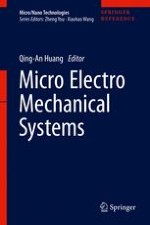This handbook volume aims to provide a comprehensive, self-contained, and authoritative reference in MEMS. It covers the theoretical and practical aspects including but not limited to sensors, actuators, RF MEMS, micro fluids and bio MEMS systems. It is particularly recommended to undergraduates, postgraduates, researchers, scientists, and field experts. This comprehensive summary will provide a solid knowledge background and inspire innovations in this highly interdisciplinary field.
The handbook series consists of 5 volumes: Micro/nano fabrication technology, MEMS, Nanomaterial, Nanomedicine and Applications of micro-/nanotechnologies in IT. Experienced researchers and experts are invited to contribute in each of these areas.The series is published under Springer Major Reference works, which allows continuous online update and publication. These features allow newcomers and other readers to keep in touch with the most up-to-date information in micro-/nanotechnologies.It presents an overview of the knowledge base, as well as selected topics and provides comprehensive and authoritative information on the field for researchers, engineers, scientists and graduate students who are involved in different aspects of micro-/nanotechnologies.This publication will provide inspiration for innovative research and application ideas for continued growth of the field.
